Original blog by Cristina Ponte, Susana Batista and Rita Baptista on sSkills page.
While smartphones consolidate their nearly universal position as an everyday digital device and communication practices remain leading, recent results from adolescents who responded to both surveys indicate greater concerns about privacy and well-being.
THE CONTEXT
This blog post presents the development of online access, activities, self-reported skills, and digital knowledge of the 3,942 young people that participated in both waves of the ySKILLS school survey in six European countries: Estonia, Finland, Germany, Italy, Poland, and Portugal.
Figure 1: Age, gender and online access
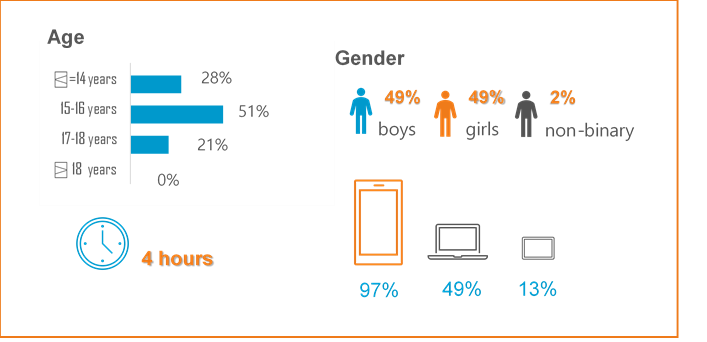
One year older, most are now aged 15-16 or over. There is a balance between boys and girls, and reported online time continues to be around four hours daily.
Almost all use smartphones every day, about half of them use laptops daily, and tablets are secondary as daily devices (Figure 1).
DAILY ONLINE ACTIVITIES
Most of the 11 activities we asked about present similar rates or small increases compared to the first wave, in 2021.
Among the most frequent activities, all except playing games increased. The most significant increase (even among all digital practices) is communication with parents and caregivers, which raised five points (Figure 2).
Figure 2: Top 4 activities in 2021 and 2022
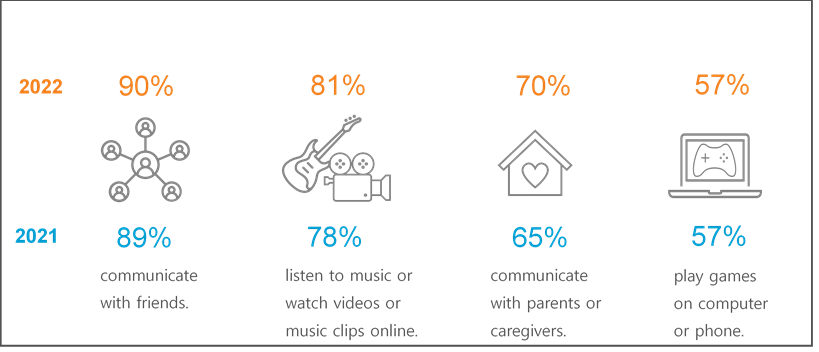
Crossing all age groups, this increase is particularly impressive among the 15–16 and the 17–18-year-olds. Girls continue to communicate more with parents and caregivers than boys, while non-binary adolescents maintain a lower rate. Not surprisingly, girls also continue to communicate more with friends, and boys continue to lead as gamers.
Another remarkable increase (3 percent points) is searching or following news about local, social, environmental, or political issues, as one of the least reported daily activities. (Figure 3). While the younger age group is the one that shows the highest increase, this increase is less clear among girls. Furthermore, there are almost no changes in looking for new friends and contacts and searching for information regarding health.
Figure 3: Least reported daily activities in 2021 and 2022
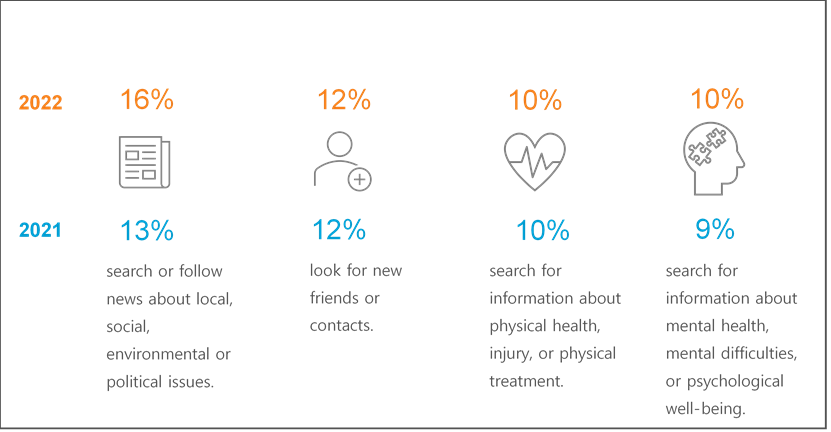
SELF-REPORTED HIGH SKILLS IN 2021 AND 2022
The items on digital skills cover both functional and critical aspects in relation to four domains – communication and interaction; content creation and production; information navigating and processing; technological and operational – see the yDSI report. Functional aspects are the ones related to understanding technical functionalities and being able to use them, whereas critical aspects point to the awareness of how and why devices and content are produced in certain ways and may have impact. Outside of the four domains, an extra item considers skills related to programming.
In both waves, participants were asked how applicable each item was for them on a scale going from not true at all (1) to very true (5). Figure 4 presents the very true rates for the 24 self-reported digital skills associated to the four domains plus programming. This later receives the lowest rate, followed by nine out of the 12 items related to two domains (information navigating and processing; content creation and production).
Figure 4: Self-reported skills: It is very true that…
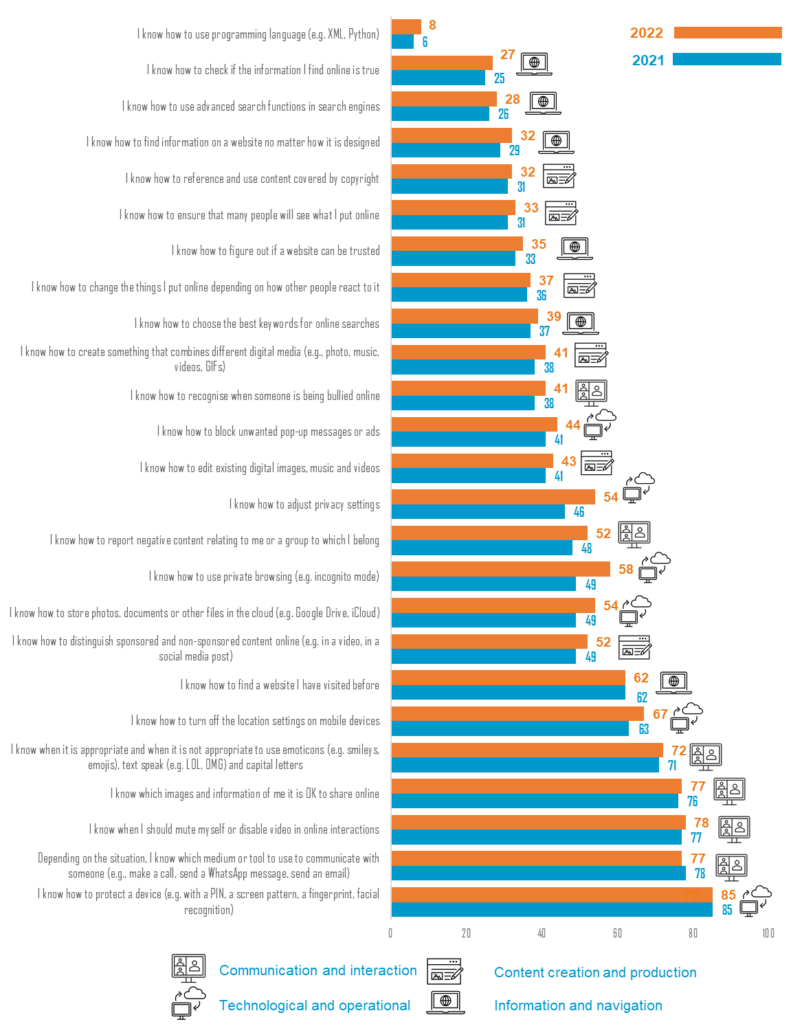
We note an increase in almost all items, which led to very few changes in the relative positions of adolescents across the six countries in three of the four skill areas. On the last steps of the ladder of self-reported skills (at the bottom) the most reported skills continue to be related to communication and interaction and to technological and operational domains, in line with the youngsters’ main online practices. Less than a third report high information and processing skills and content creation and production skills.
MORE AWARENESS ON PRIVACY AND WELL-BEING ISSUES
Interestingly, the items that increase more from the 1st to the 2nd wave are related to privacy and well-being issues (Figure 5).
Figure 5: Self-reported skills privacy and well-being issues (It is very true that…)
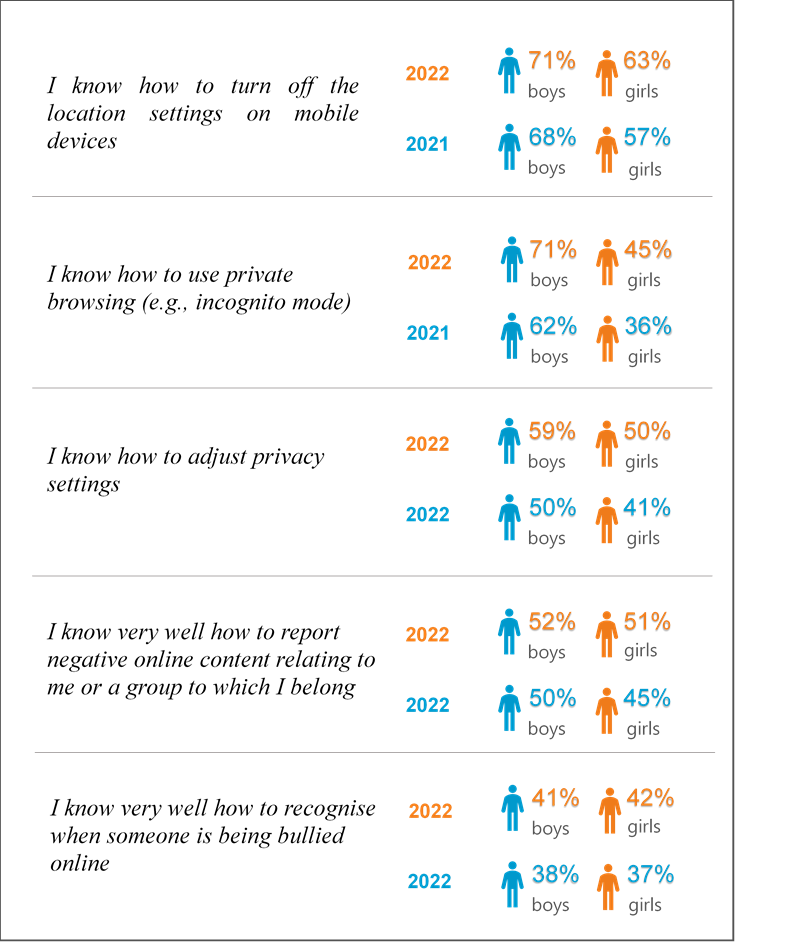
Among the first three items, from the technological and operational domain, the increase on turning location settings on or off among girls is more than twice the increase among boys. So, while boys continue to lead in the above skills, girls have clearly gained ground. Two communication and interaction items also expressively increased, and girls made more progress than boys on the identification of online bullying.
In sum, the raise of high-level digital skills in three out of the four domains is relatively small, as Figure 6 shows. The exception are the technological and operational skills, because of the expressive increase of the above-mentioned items related to privacy management. Furthermore, the increase of this domain is the is only one that occurs in all six countries and involves boys and girls equally (see national infographics here).
Figure 6: Evolution of the self-reported high-level skills by domain
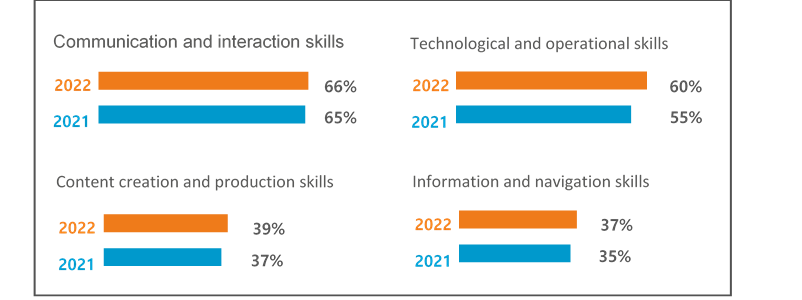
MORE DIGITAL KNOWLEDGE, BUT STILL ROOM FOR IMPROVEMENT
The correct answers to the six statements aiming to evaluate digital knowledge about how the internet and digital technologies work (see yDSI report) also increased: from 48% in 2021 to 54% in 2022, with a balance between boys and girls. The evolution of each correct answers is shown in Figure 7.
Figure 7: Correct answers on knowledge items
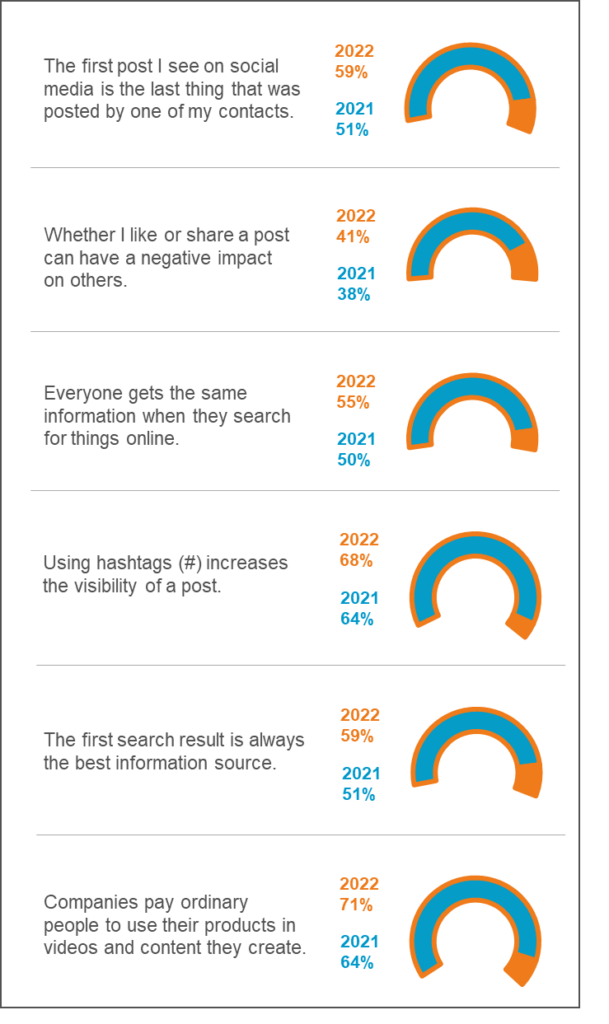
The statement related to Internet search shows the largest increase in correct answers (almost 8 points), followed by the one on sponsoring influencers (7 points). Other statements related to social media show a more modest increase, even though almost all participants stated that they use a social network with their own profile (95 percent in 2022). Similar trends were observed among boys and girls.
CONCLUDING REMARKS
Comparing the first and second waves, we see almost no changes in digital access controlled by the smartphone and in the most and less frequent daily activities, indicating a consolidated adolescent digital culture. Nevertheless, it is interesting to note that the most expressive digital increase relates to communication with parents and caregivers, as these adolescents are now more likely to negotiate their mobile autonomy. It is also interesting to note that the increase in technological and operational skills is mainly related to the management of online privacy, especially regarding location settings among girls, as if they were more experiencing parental surveillance.
Another notable increase among girls concerns awareness of wellness issues and how to act against harmful situations, not only in relation to themselves but also to their peers.
Although there is improvement, the percentages of correctly answered knowledge items are still relatively low among these adolescents. Most items were answered incorrectly by more than one in three adolescents.
WHAT TO EXPECT IN THE COMING MONTHS
The second wave was supplemented by performance tasks on communication and interaction, content creation and information search and retrieval. After a long process that included pre-testing in some countries, as described in this report, the performance tasks were conducted among a sample of adolescents in the six countries. This allows the extent to which self-reported skills match those in action to be assessed.
The third wave of the study is now starting and will be conducted this Spring.





